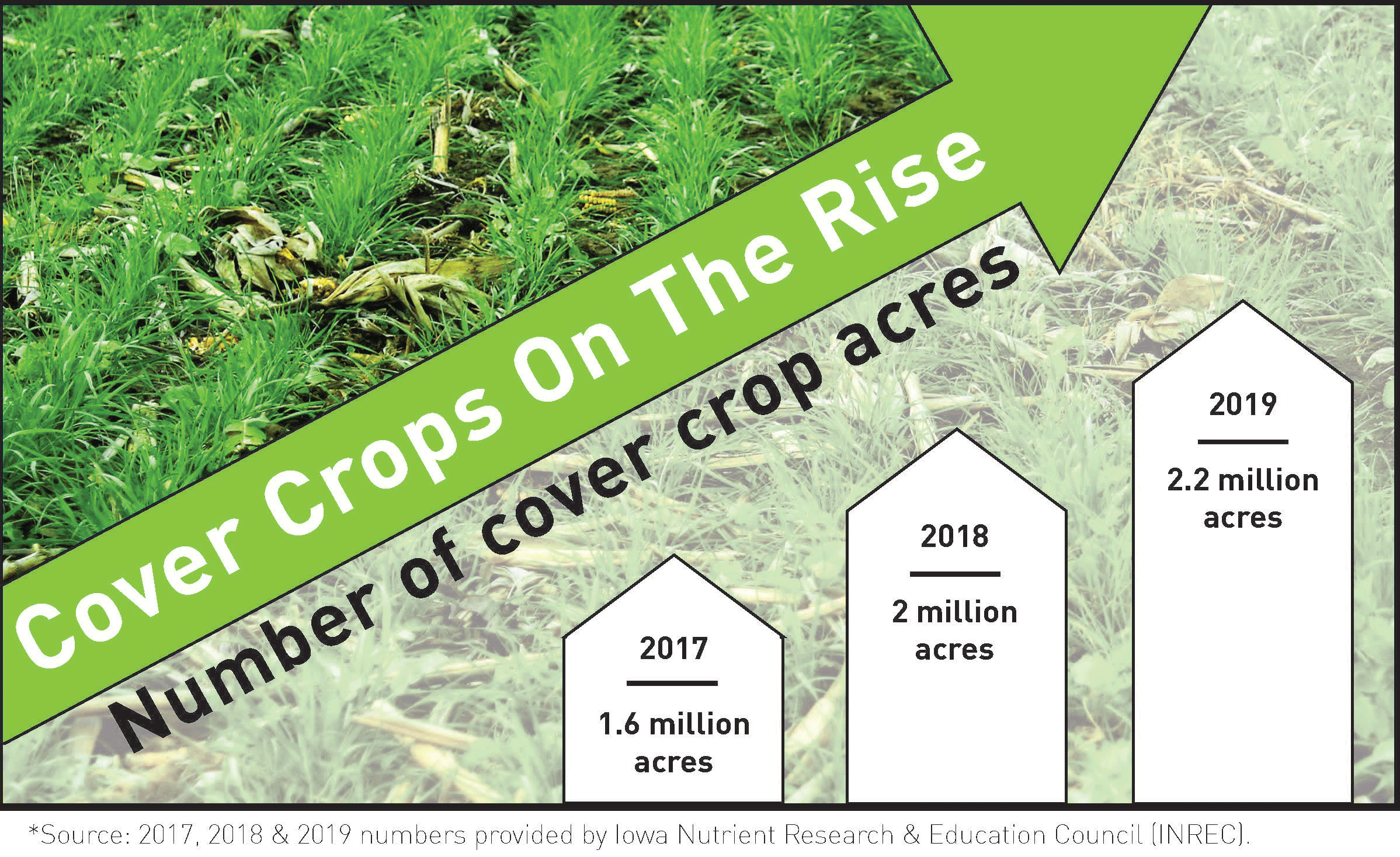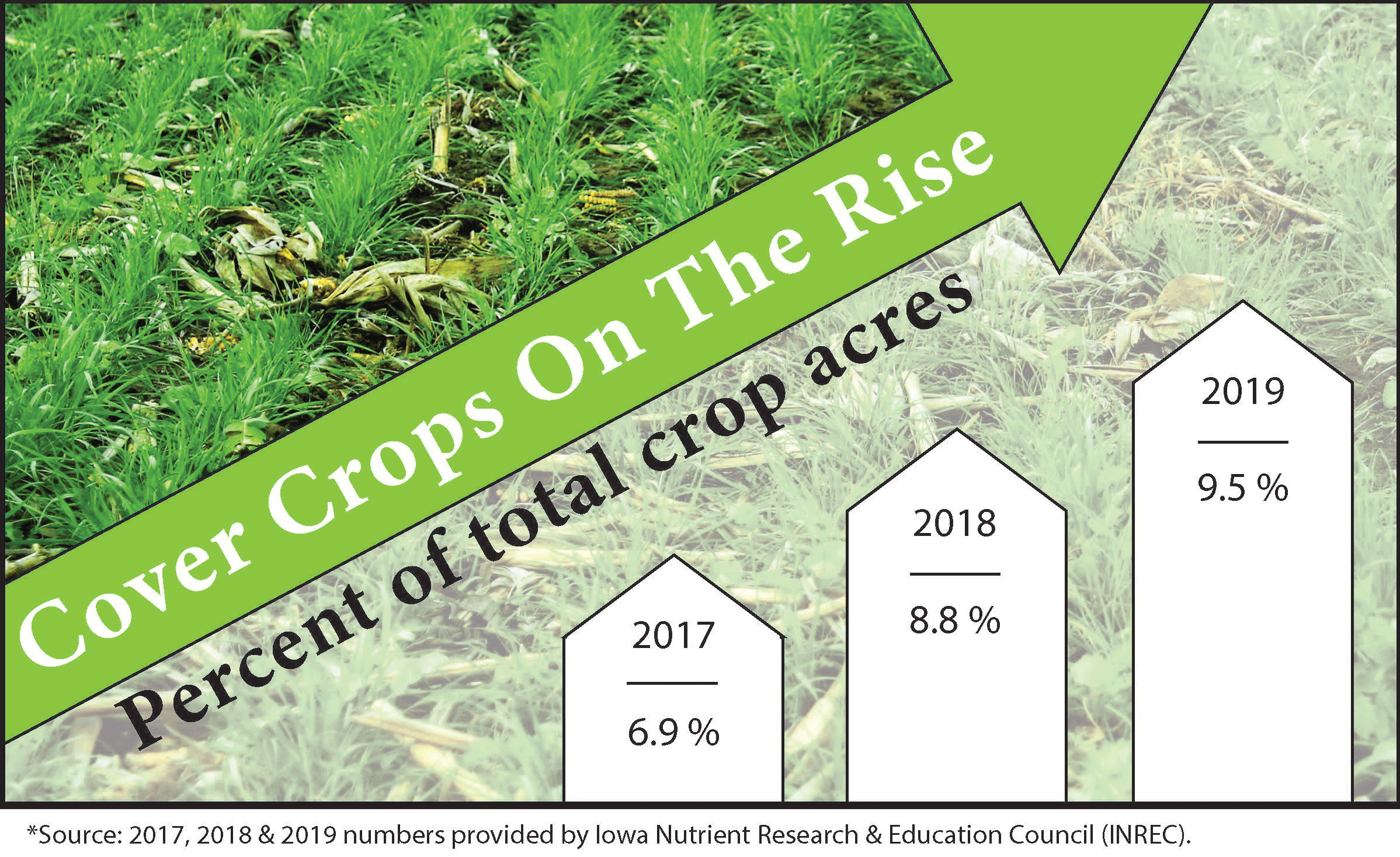Conservation and water quality momentum
Author
Published
3/29/2021
Iowa farmers are making steady progress in planting more cover crops, reducing tillage, testing soil and adopting other practices that improve water quality and reduce soil loss, according to a report that tracks ag retailer sales data to determine conservation progress in the state.
The annual report, developed by the Iowa Nutrient Research and Education Council (INREC), tracks progress farmers are making on a wide range of conservation practices. INREC gathers the conservation information using a statistically sound study of sales data from ag retailers and certified crop advisors to measure and demonstrate progress in conservation practices.
Cover crop gains
For the three years from 2017 to 2019, the INREC report verified that farmers planted significantly more acres to cover crops, a practice that has shown to reduce nitrogen and phosphorus losses from farm fields by nearly one-third.
In 2019, Iowa farmers planted cover crops on 2.18 million acres, a gain of 8% from the acreage planted in 2018 and a 36% gain from the acres planted in 2017. The survey also showed that the percentage of Iowa crop acreage planted to cover crops rose to 9.5% in 2019, compared to only 6.9% in 2017.
Those gains reflect the tremendous progress in cover crops. Prior to the 2013 adoption of the Iowa Nutrient Reduction Strategy (INRS), Iowa’s cover crop acreage was estimated at only around 10,000 acres per year.
“The very consistent growth in cover crops is very encouraging,” Richmond said. “It tells us that more Iowa farmers are continuing to incorporate cover crops as a normal part of their operations.”
Rye is by far the most popular cover crop species on Iowa farms, the INREC report showed. In 2019, more than 81% of cover crop acres were planted to rye.
Iowa farmers appear to favor rye as a cover crop because it germinates quickly in the fall and overwinters, providing soil and water quality benefits in the late winter and early spring before corn or soybeans are planted, Richmond said.
Nitrification inhibitors
Another promising signal is farmers’ increased use of nitrification inhibitors, Richmond said. Farmers used inhibitors, which keep the nitrogen fertilizer in place until it can be accessed by crop roots, on nearly 85% of the acres treated with anhydrous ammonia in 2019. That was up from 72.6% in 2017.
Nitrification inhibitors are relatively new products and were rarely used in the baseline period of the INRS from 1980 through 1996, Richmond noted.
Other practices
Other conservation practices showed growth in Iowa during the 2017-2019 period including:
• Split season nitrogen applications, designed to time fertilizer applications to when the crop can best use it. Iowa farmers used split season applications on more than 20% of their acres, on average, during the three-year period.
• Soil testing to determine phosphorus levels before making applications. In 2019, 94% of Iowa farmers used soil tests for phosphorus to ensure nutrient applications only occur when needed, up from 74.3% in 2017. That indicates more farmers are making phosphorus applications only when the nutrient is needed, Richmond said.
• No-till and conservation tillage practices, which help stem soil erosion and nutrient losses. On average during the 2017-2019 period, farmers used the tillage practices on 78% of their acres, the INREC report showed.
INREC is in the process of compiling data for its 2020 report on conservation practices, Richmond said. However, the annual survey of conservation practices has been slowed by the COVID-19 pandemic, he said.
The entire INREC report can be accessed at https://bit.ly/3enBDtX.


(Graphics above: New data from the Iowa Nutrient Research and Education Council (INREC) show significant gains in both the number of cover crop acres and the percentage of Iowa acres planted in cover crops. GRAPHICS / JESSICA GOOSLBY)
Want more news on this topic? Farm Bureau members may subscribe for a free email news service, featuring the farm and rural topics that interest them most!